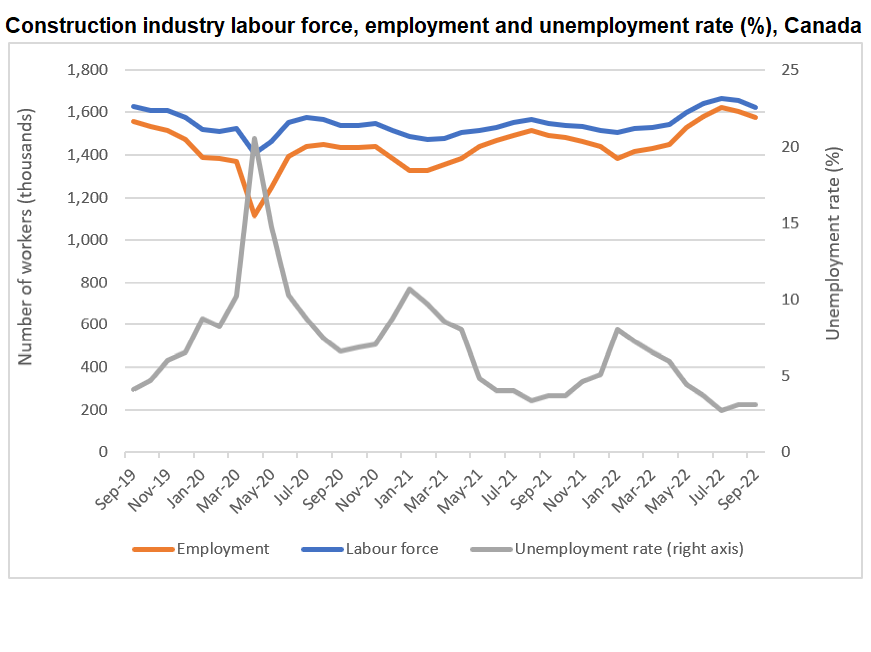Canada’s labour force continues to experience never-before-seen trends.
The latest Labour Force Survey data published by Statistics Canada shows a contraction of 79,000 workers (-0.4%) between May and September.
Meanwhile, employers continue to report record numbers of job vacancies.
In its second quarter look at the trend, Statistics Canada finds that employers across all sectors of the economy were actively looking to fill 997,000 vacant positions, with construction employers looking to fill nearly 83,000 of those positions. Both figures are among the highest on record.
The ratio of new hires to job vacancies is also at an historically low level. Employers reported hiring 44 new employees for every 100 vacancies in the second quarter of the year. By comparison, there were 113 new hires for every 100 vacancies in the second quarter of 2016.
Statistics Canada collected its September LFS data during the week of September 11 to 17. The data finds a slight increase (+21,000) in all-industry seasonally adjusted employment. It also shows an increase in average hourly wages across nearly all industries – including construction (+7.5%) – for the month.
Construction faces labour force challenges
The construction sector continues to report labour force challenges of its own.
Measured by the value of building permits, construction volume continues to increase. Statistics Canada reports that the value of building permits increased by 11.9% to $12.5 billion in August. The value of building permits issued through July is already approximately $10 billion higher than in the first seven months of last year.
Under strong levels of construction activity, the industry’s available labour supply remains constrained.
Seasonally unadjusted employment data for the industry in September shows a drop of 30,800 (-1.9%) workers. The decline brings total industry employment to 1,574,400. That figure is 5.5% higher (+82,600 workers) than in September 2021, and 1% higher than in September 2019.

All provinces except Newfoundland and Labrador (+5.1%), Nova Scotia (+2.1%), and Alberta (+0.1%) reported declines in employment in September. At -2.7%, British Columbia’s decline is noteworthy. The drop offsets gains reported in August and brings the province’s sectoral employment back to below pre-pandemic levels. Ontario, Quebec, New Brunswick, and Nova Scotia were the only provinces to report higher employment levels than those registered prior to the onset of the pandemic.
The industry’s unemployment rate held steady at 3.1% in September. That rate remains 0.6 percentage points below September 2021 levels and one percentage point below 2019 levels.
Most provinces reported little or no changes in their respective unemployment rates in September. Five – British Columbia, Ontario, Manitoba, Quebec, and Alberta – reported unemployment levels below the 3.1% national average, while Newfoundland and Labrador maintained the sector’s highest unemployment rate at 11.6%.
Saskatchewan, Nova Scotia, and Newfoundland and Labrador are the only provinces to report higher unemployment levels compared to pre-pandemic levels.
Finally, hours worked increased 2.5% in September. All provinces except for New Brunswick, Saskatchewan, and Prince Edward Island reported increases. Total hours worked increased 5.7% from September 2021 levels, but remained below pre-COVID levels in most provinces.


Construction Key Indicators
